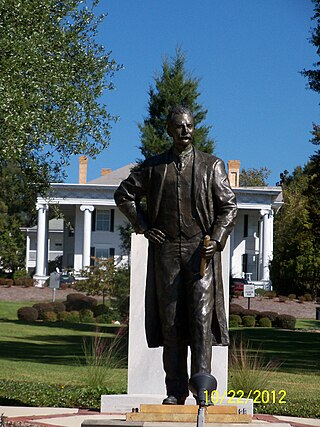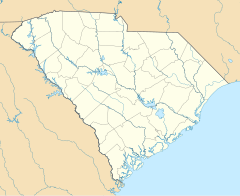
The Professional Golfers' Association of America is an American organization of golf professionals that was founded in 1916. Consisting of nearly 29,000 members, the PGA of America's undertaking is to establish and elevate the standards of the profession and to grow interest and participation in the game of golf.

The Hotel Tuller once stood at Adams Avenue West, Bagley Street, and Park Avenue across from Grand Circus Park in downtown Detroit, Michigan. It was one of the largest luxury hotels in Detroit, the first erected in the Grand Circus Park Historic District and known as the "grand dame of Grand Circus Park". Composer Gerald Marks' Hotel Tuller Orchestra was based here and contributed to Columbia Records' success in the mid-1920s. The site is now the location of a parking lot next to the United Artists Theatre Building.

The Hampton House is a residential condominium located in the Hyde Park neighborhood of Chicago, Illinois on the property that once housed the Hyde Park House, a hotel built by Hyde Park founder Paul Cornell in the 1850s. The property was originally named the Sisson Hotel when constructed in 1918.

Washington Park is a 372-acre (1.5 km2) park between Cottage Grove Avenue and Martin Luther King Drive, located at 5531 S. Martin Luther King Dr. in the Washington Park community area on the South Side of Chicago. It was named for President George Washington in 1880. Washington Park is the largest of four Chicago Park District parks named after persons surnamed Washington. Located in the park is the DuSable Museum of African American History. This park was the proposed site of the Olympic Stadium and the Olympic swimming venue for Chicago's bid to host the 2016 Summer Olympics. Washington Park was added to the National Register of Historic Places on August 20, 2004.

Edith Hope Goddard Iselin was an American heiress and sportswoman who was the first American woman to compete as a crew member in the America's Cup yacht race. She also owned thoroughbred racehorses.

William Lee Stoddart (1868–1940) was an architect who designed urban hotels in the Eastern United States. Although he was born in Tenafly, New Jersey, most of his commissions were in the South. He maintained offices in Atlanta and New York City.
The Augusta–Aiken Railway and Electric Corporation was an electric interurban railroad that operated between Augusta, Georgia and Aiken, South Carolina. Once completed in 1902 the railroad remained in operation until it was abandoned in 1929.

The Masonic Temple in Atlanta, Georgia was located at the northwest corner of Peachtree Street and Cain Street in Downtown Atlanta from 1909-1950. The architect was John Robert Dillon.

The Riverside Inn was a hotel and dinner theater in Cambridge Springs, Crawford County in the U.S. state of Pennsylvania. Built in the late-1880s at the height of the mineral springs craze in the United States, it was operated as a resort for vacationers heading to the nearby springs that gave Cambridge Springs its name. The Riverside Inn was the first of many resorts to be built during that period. It was listed on the National Register of Historic Places in 1978. The Riverside Inn was destroyed by fire in the early morning of May 2, 2017.

James Urquhart Jackson was a native of Augusta, Georgia, who founded and developed the city of North Augusta, South Carolina. Jackson worked as a financer, a railroad builder, and as a developer of industrial affairs for Georgia.

Hotel Indigo Atlanta Midtown is a historic building in midtown Atlanta, Georgia. Designed by Atlanta-based architectural firm Pringle and Smith in 1925, the brick building is located on Peachtree Street, across from the Fox Theatre. It has been listed on the National Register of Historic Places since 2006, and, in 2022, is a member of Historic Hotels of America.

The Pabst Hotel occupied the north side of 42nd Street in Manhattan, New York City, between 7th Avenue and Broadway, in Longacre Square, from 1899 to 1902. It was demolished to make room for the new headquarters of The New York Times, for which Longacre Square was renamed Times Square.

The Four Southern Poets Monument, also known as the Monument to Southern Poets and Poets' Monument, is a granite monument in Augusta, Georgia, in the United States.
Moncrief Springs, originally known as Moncrief's springs or Moncrief Spring, is a natural spring near Jacksonville, Florida in Duval County, Florida.
The Cleveland, Akron and Columbus Railroad was a railroad company in the U.S. state of Ohio. It connected its namesake cities and served as a vital link for later parent Pennsylvania Railroad to connect Cleveland and Columbus, Ohio.

Founded in the 1830s as a railroad terminus, Atlanta experienced rapid growth in its early years to become a major economic center of Georgia, with several hotels built to accommodate for this growth. Following its destruction during the Civil War, Atlanta experienced a resurgence and another hotel boom commenced in the late 1800s through the early 1900s. In the later half of the 20th century, hotel skyscrapers began to appear on the skyline, including what was at the time the tallest hotel in the United States. Later, a trend emerged of converting old office buildings into boutique hotels.

Ponce de Leon Apartments is a historic apartment building in Atlanta, Georgia, United States. A part of the Fox Theatre Historic District, the building is located at the intersection of Peachtree Street and Ponce de Leon Avenue in midtown Atlanta. It was built by the George A. Fuller Company in 1913, with William Lee Stoddart as the building's architect. The building was designated a Landmark Building by the government of Atlanta in 1993.

The Terminal Hotel was a hotel in Atlanta, Georgia, United States. Built by Samuel M. Inman in 1906, the hotel was located at the intersection of Spring Street and Mitchell Street in the Hotel Row district of downtown. It suffered two major fires during its existence, the latter of which completely destroying the building.
The Indian Lakes Hotel is a resort located in Bloomingdale, Illinois. It opened in 1980 as Bloomingdale's only resort hotel. The hotel closed in 2021 due to a tragic mass shooting incident which revoked the hotel's license. The Indian Lakes property is currently under renovation to be reopened.

















